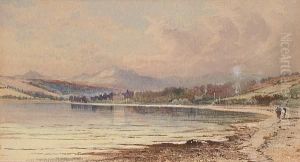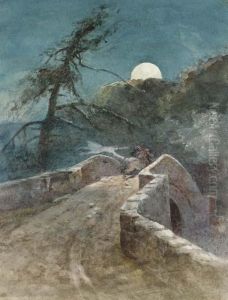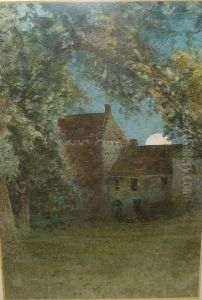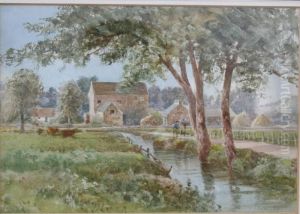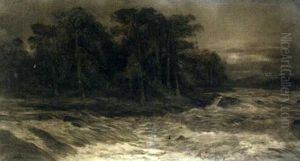Charles Blatherwick Paintings
Charles Blatherwick was a British artist known for his watercolor paintings, particularly his landscapes. He was born in 1833 in London, England. Little is known about his early life and education, as with many artists of the period, but he emerged as a respected watercolorist in the Victorian era.
Blatherwick's work often captured the idyllic and pastoral scenes of the English countryside, reflecting the Victorian era's romanticizing of rural life. His paintings were characterized by their detailed and delicate approach, with a focus on natural light and atmospheric effects. He was particularly adept at using watercolors to achieve a sense of translucency and luminosity, which made his landscapes feel alive and inviting.
Throughout his career, Blatherwick exhibited at various prestigious institutions, including the Royal Academy and the Royal Watercolour Society. His work was well-received, and he gained a reputation for his artistic skill and his ability to capture the essence of a scene with a soft yet vibrant palette.
Charles Blatherwick's contribution to the art world was not limited to his paintings; he was also an influential figure among his peers and the generations of artists who followed. His techniques and approach to watercolor painting influenced many other artists in the medium.
Blatherwick passed away in 1903, leaving behind a legacy of beautiful, tranquil landscapes that continue to be admired for their technical mastery and their embodiment of the peacefulness of the English countryside. His works are held in various art collections and continue to be appreciated by art lovers and collectors alike.
